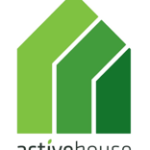Knauf Insulation Experience Center

We have successfully balanced indoor air quality and thermal environment for optimal indoor comfort. The comfort is achieved by balancing natural ventilation – all windows can be opened to provide cross-section or one-sided natural – and mechanical ventilation with recuperation to use the heath of wasted air from the company’s production building next door.
Also the care for the environment was taken into account so CO2 emissions into the atmosphere are less than 13 kg/m3 per year or approximately 8,5 tons per year.

The main goal was to minimize energy demand of a building. Reinforced concrete structure with brick walls, sufficient insulation and 3 pane glazing were used to minimize heat loss through the facade. Green roof provides additional gains with energy savings, as it cools the building during summer by absorbing the heat and minimises the use of energy used for heating during the winter, as it acts as an insulation layer.
To use as much energy available from company’s production building, at least 50% of heat needed for heating is gained from waste heat from the production building next door.
Mechanical ventilation, used to control air temperature during winter and summer, uses heat and humidity recovery (heat recovery is more than 75%), which enables energy savings used for heating.

The project enabled sustainable approach to construction, which proves to be more and more valuable with increased construction material consumption and its impact on the environment. The idea was to have as little of an impact on the environment as possible, not only trough used materials but also trough energy used by the building.

Heat loss has been minimized with the use of appropriate insulation materials in the building envelope, with thermal bridges reduced to minimum, and with an air tight construction and outer surface.
The roof of the building is a green roof that will also bring benefits to the users of the building and to the environment. Water consumption is reduced with water saving taps and toilets and with responsible water using.

All the materials used meet environmental criteria, required by DGNB certification procedure. The materials are certified non-toxic and this create environment that si safe for building users.


